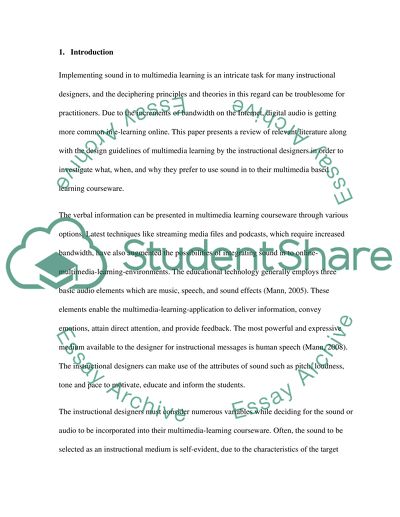Cite this document
(“THE ROLE OF SOUND IN EIGHT DESIGN GUIDELINES OF MULTIMEDIA LEARNING Essay”, n.d.)
Retrieved from https://studentshare.org/environmental-studies/1410316-the-role-of-sound-in-eight-design-guidelines-of
Retrieved from https://studentshare.org/environmental-studies/1410316-the-role-of-sound-in-eight-design-guidelines-of
(THE ROLE OF SOUND IN EIGHT DESIGN GUIDELINES OF MULTIMEDIA LEARNING Essay)
https://studentshare.org/environmental-studies/1410316-the-role-of-sound-in-eight-design-guidelines-of.
https://studentshare.org/environmental-studies/1410316-the-role-of-sound-in-eight-design-guidelines-of.
“THE ROLE OF SOUND IN EIGHT DESIGN GUIDELINES OF MULTIMEDIA LEARNING Essay”, n.d. https://studentshare.org/environmental-studies/1410316-the-role-of-sound-in-eight-design-guidelines-of.


